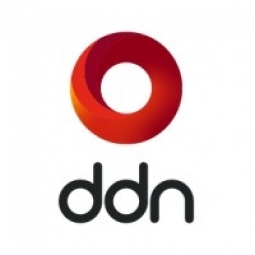公司规模
Large Corporate
国家
- Australia
产品
- DDN’s GS7K® parallel file system appliance
- IBM Spectrum Scale file system
技术栈
- IBM Spectrum Scale
- DDN GRIDScaler
实施规模
- Enterprise-wide Deployment
影响指标
- Productivity Improvements
- Digital Expertise
技术
- 基础设施即服务 (IaaS) - 云存储服务
- 基础设施即服务 (IaaS) - 混合云
适用行业
- 教育
适用功能
- 产品研发
服务
- 云规划/设计/实施服务
- 数据科学服务
关于客户
一个多世纪以来,昆士兰大学 (UQ) 一直致力于培养和培养杰出人才,以发展知识领导力,创造更美好的世界。在昆士兰大学的三个校区,昆士兰大学的 7,000 名教职员工和 50,000 名学生提供和体验无与伦比的教学、学习和研究卓越性,为全球带来积极的变化。昆士兰大学拥有九个国际公认的研究机构,在从生物科学和纳米技术到采矿、工程、农业、社会科学和人文科学等广泛学科的发现和转化研究方面处于领先地位。据昆士兰大学研究计算中心 (RCC) 主任 David Abramson 教授称,推动研究发展需要最快、最有效地访问数据存储和计算系统。
挑战
昆士兰大学 (UQ) 是一所领先的学术机构,拥有九个国际公认的研究机构。昆士兰大学的研究人员在各个领域取得了里程碑式的发现,并依靠 IT 基础设施提供超快的多站点数据访问。无论研究人员身在何处,无论数据在何处创建、操作和存档,大学都需要确保通用数据访问。该大学使用 QRIScloud,这是昆士兰网络基础设施基金会 (QCIF) 运营的 NCRIS 国家研究基础设施的高容量云计算和存储节点。迄今为止,校园计算集群和 QRIScloud 之间的数据交换都是手动完成的,这并不是对宝贵研究时间的最佳利用。同样重要的是,需要主动解决因研究合作增加而导致的持续、有机数据增长问题。
解决方案
为了加快发现速度,昆士兰大学需要一个高性能数据存储结构,该结构可以横跨主校区和异地数据中心,以不间断地适应研究工作流程,以及一个大数据存储平台,可以提供本地缓存存储作为其城市数据缓存基础设施 (MeDiCi) 的基础部分。昆士兰大学购买并部署了两台容量为 500 TB 的 DDN GS7K® 存储设备。一台部署在校园内的 IT 服务 (ITS) 数据中心,另一台部署在 QBI 以支持神经科学研究。昆士兰大学设计其 MeDiCi 数据存储结构的方式是,来自科学仪器的数据进入本地文件系统,然后该系统将数据自动移动到连接到昆士兰大学 HPC 环境的文件系统。
运营影响
数量效益

Case Study missing?
Start adding your own!
Register with your work email and create a new case study profile for your business.
相关案例.

Case Study
Revolutionizing Medical Training in India: GSL Smart Lab and the LAP Mentor
The GSL SMART Lab, a collective effort of the GSL College of Medicine and the GSL College of Nursing and Health Science, was facing a challenge in providing superior training to healthcare professionals. As clinical medicine was becoming more focused on patient safety and quality of care, the need for medical simulation to bridge the educational gap between the classroom and the clinical environment was becoming increasingly apparent. Dr. Sandeep Ganni, the director of the GSL SMART Lab, envisioned a world-class surgical and medical training center where physicians and healthcare professionals could learn skills through simulation training. He was looking for different simulators for different specialties to provide both basic and advanced simulation training. For laparoscopic surgery, he was interested in a high fidelity simulator that could provide basic surgical and suturing skills training for international accreditation as well as specific hands-on training in complex laparoscopic procedures for practicing physicians in India.

Case Study
IoT platform Enables Safety Solutions for U.S. School Districts
Designed to alert drivers when schoolchildren are present, especially in low-visibility conditions, school-zone flasher signals are typically updated manually at each school. The switching is based on the school calendar and manually changed when an unexpected early dismissal occurs, as in the case of a weather-event altering the normal schedule. The process to reprogram the flashers requires a significant effort by school district personnel to implement due to the large number of warning flashers installed across an entire school district.

Case Study
Implementing Robotic Surgery Training Simulator for Enhanced Surgical Proficiency
Fundacio Puigvert, a leading European medical center specializing in Urology, Nephrology, and Andrology, faced a significant challenge in training its surgical residents. The institution recognized the need for a more standardized and comprehensive training curriculum, particularly in the area of robotic surgery. The challenge was underscored by two independent studies showing that less than 5% of residents in Italian and German residency programs could perform major or complex procedures by the end of their residency. The institution sought to establish a virtual reality simulation lab that would include endourological, laparoscopic, and robotic platforms. However, they needed a simulator that could replicate both the hardware and software of the robotic Da Vinci console used in the operating room, without being connected to the actual physical console. They also required a system that could provide both basic and advanced simulation training, and a metrics system to assess the proficiency of the trainees before they performed surgical procedures in the operating theater.

Case Study
Edinburgh Napier University streamlines long-distance learning with Cisco WebEX
• Geographically dispersed campus made in-person meetings costly and inconvenient.• Distance-learning programs in Malaysia, India, and China required dependable, user-friendly online tools to maximize interaction in collaborative workspaces.• Virtual learning environment required a separate sign-in process, resulting in a significant administrative burden for IT staff and limited adoption of collaboration technology.

Case Study
8x increased productivity with VKS
Before VKS, a teacher would spend a lot of time showing a group of 22 students how to build a set of stairs within a semester of 120 hours. Along with not leaving the teacher much time to provide one-on-one support for each student to properly learn carpentry, it also left a considerable amount of room for error. Key information would be misinterpreted or lost as the class was taught in the typical show-and-tell way.

Case Study
Scalable IoT Empowering GreenFlex's Sustainable Growth
GreenFlex, a company that supports sustainable development, decarbonization, and energy efficiency, faced several challenges in its quest to expand its business. The company needed to deploy a robust and sustainable IoT technology to support its growth. It was crucial for them to monitor and control devices at customer sites in a safe and reliable manner. They also needed to integrate devices across a range of communication protocols and gather and act on data to meet efficiency targets. GreenFlex had previously built IoT capabilities into its digital platform, GreenFlexIQ, to monitor and manage customer sites remotely. However, they soon realized that they needed a new platform to support their ambitions. They needed a platform that could scale to connect more devices for production management and make it easier for the operations team to manage devices in the field.







